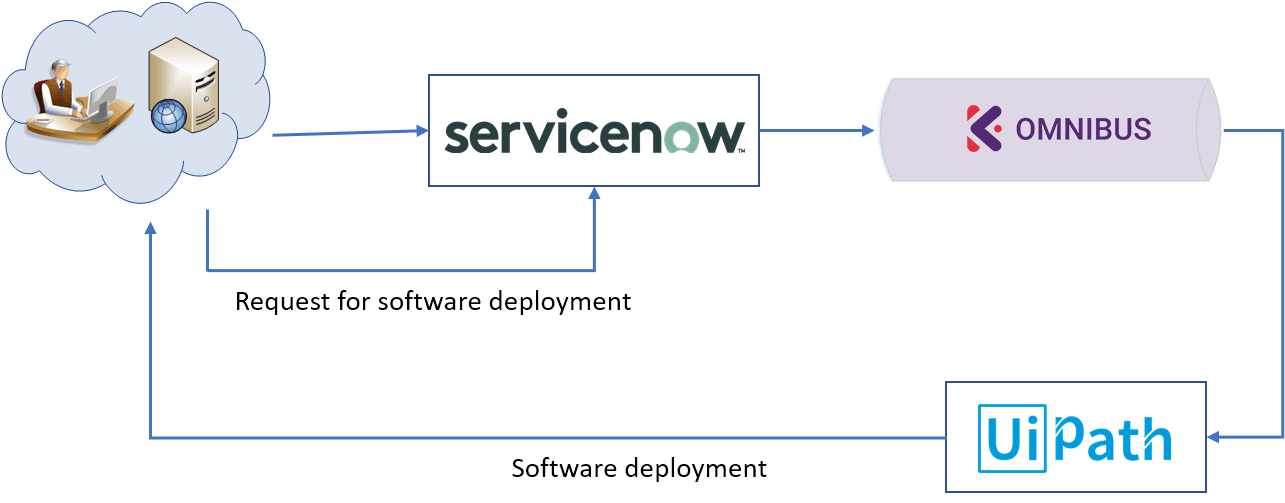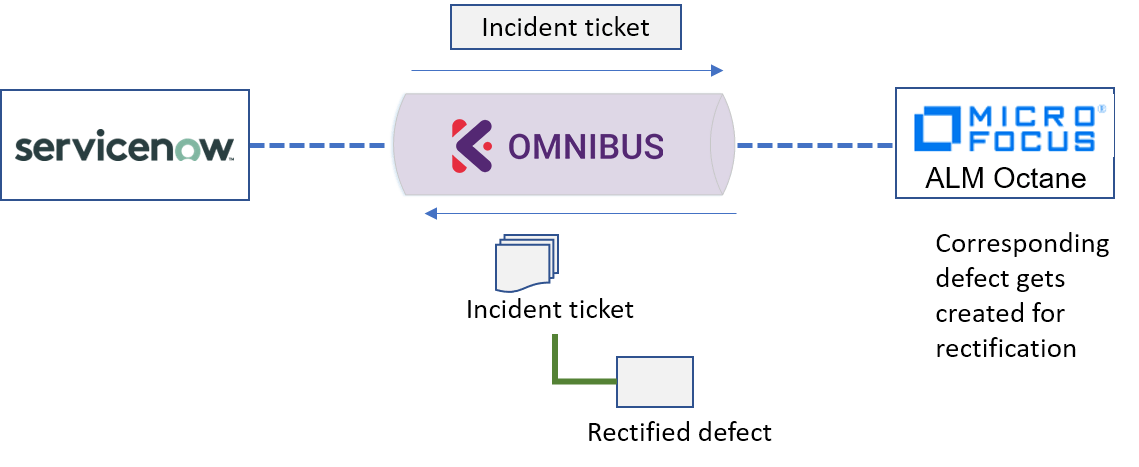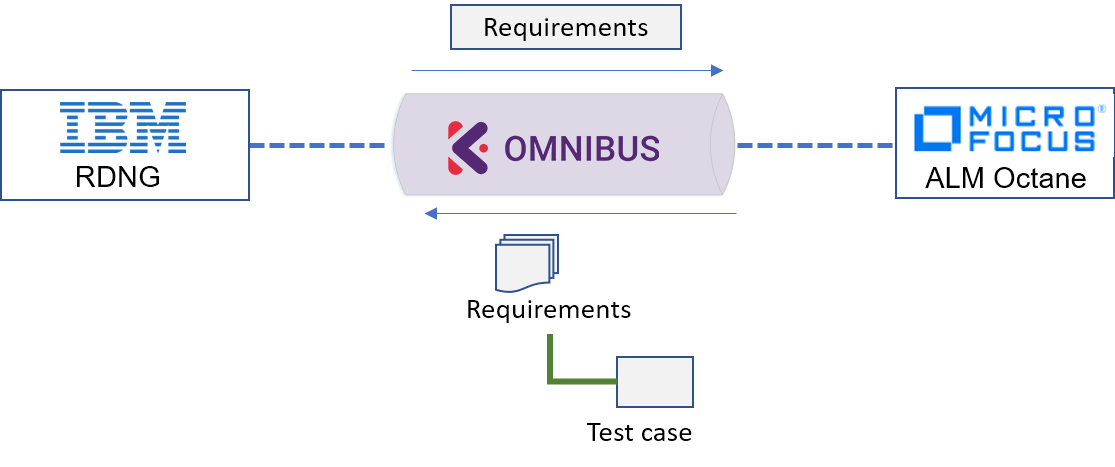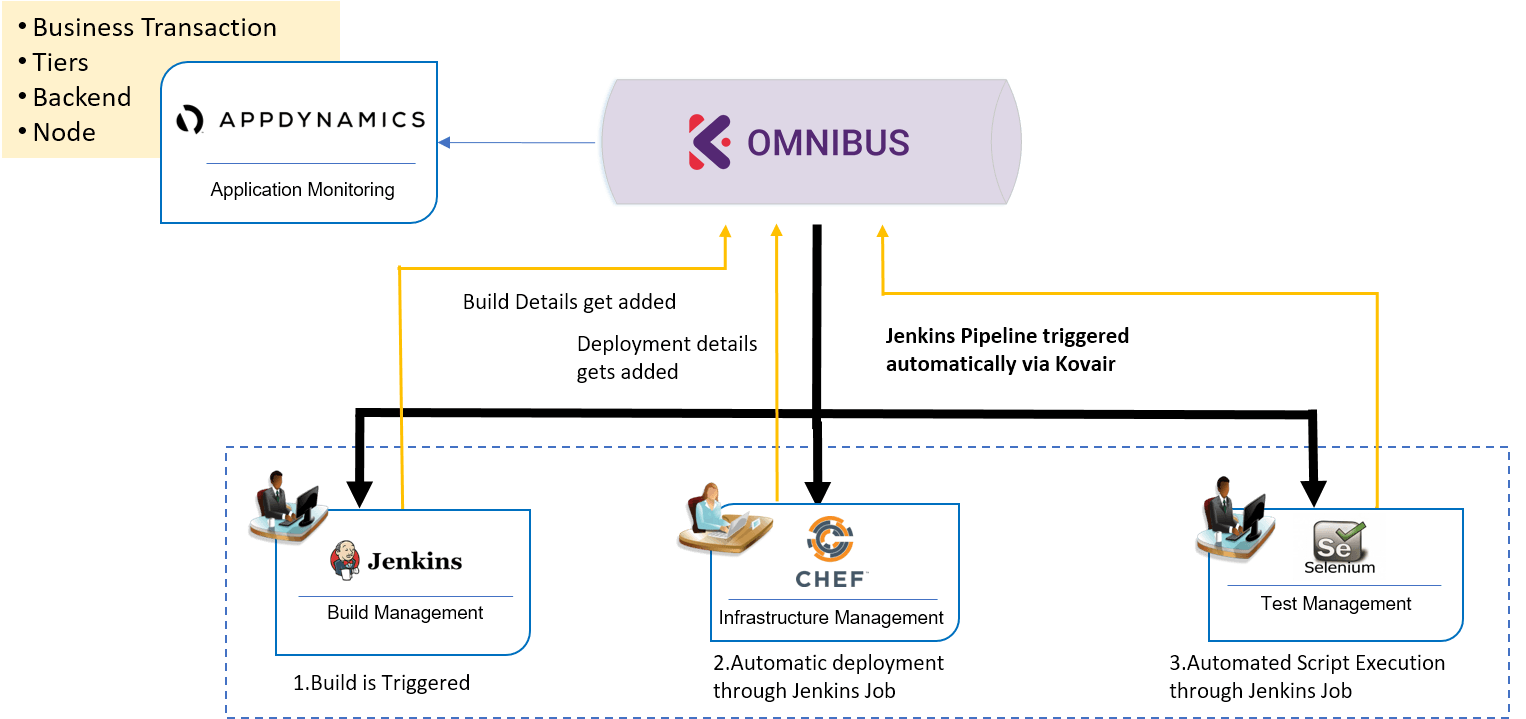UiPath is a Robotic Process Automation tool which is used for Windows desktop automation. It is used to automate repetitive/redundant tasks and eliminates human intervention.
Kovair UiPath Integration Adapter
The Kovair adapter for UiPath, when integrated to the UiPath tool using Kovair Omnibus, enables users to keep track of the execution status of an automated process, the associated jobs triggered following the execution, and details about the Robot that has been assigned to do the job from a machine.
Features & Benefits
- The integration facilitates more scalability to your services, increases operational efficiency and service quality.
- With ServiceNow adapter, service availability is higher and customer experience is improved. Service deployment is also more efficient.
- Reduce risk and improve compliance by applying automation intelligently and pervasively.
Benefits of Kovair UiPath Adapter
- Workflow Process Automation: Integration of RPA (Robotic Process Automation) together with implementation of robust methodology can help the organization to achieve a digital-enabled environment with zero human interference and a strategic vision for optimizing the total cost for serving customers.
- Automated Service Desk Management: RPA integration will help to leverage an organization’s existing workflow process thereby facilitating 24X7 service delivery.
Services Supported in Kovair UiPath Adapter
| Exposed Entities | Supported Events | Supported Actions |
|---|---|---|
|
|
|
Use Case Scenario with Kovair UiPath
Let us consider a typical DevOps scenario using tools Remedy/Service Now for raising tickets and UiPath for process automation.
- For tickets created for a particular category in Remedy/ServiceNow, specific key message would be pushed to UiPath by Kovair.
- The RPA orchestrator of UiPath, based on the key message passed, will derive the script to be executed for fixing the error noted, based on which it would run the script on a remote machine. However, the script/business logic for the corresponding “key message” should be on the same remote machine.
- RPA Orchestrator will share the result against the input received from Kovair
- Kovair will receive information on whether the problem could be fixed. If the RPA fails to fix the issue, then Kovair will update the existing ticket and raise a new ticket at Remedy under different category using the information that was sent to RPA.








 Kovair offers over 110+ off-the-shelf multi-vendor ALM and IT tool adapters and plugins for integration support. These adapters and plugins can help to extend the integrated development environment that is created by integrating different ALM tools to Omnibus. Using Omnibus and respective tool API, Kovair adapters can expose all major artifacts and related attributes of one tool to other tools facilitating an end-to-end traceability across the product lifecycle. Users can also fetch data, pass events, and perform actions on other tools through these adapters. Kovair plugins facilitate complete IDE management by allowing users to add, view, and edit artifacts in other connected tools directly from the IDE.
Kovair offers over 110+ off-the-shelf multi-vendor ALM and IT tool adapters and plugins for integration support. These adapters and plugins can help to extend the integrated development environment that is created by integrating different ALM tools to Omnibus. Using Omnibus and respective tool API, Kovair adapters can expose all major artifacts and related attributes of one tool to other tools facilitating an end-to-end traceability across the product lifecycle. Users can also fetch data, pass events, and perform actions on other tools through these adapters. Kovair plugins facilitate complete IDE management by allowing users to add, view, and edit artifacts in other connected tools directly from the IDE. 





